Getting started
Value Chain
The flow of value through the system
This guide heavily relies on the concept of a Value Chain and Constraint. In this lesson, we go over what we'll consider a Value Chain. Constraint is covered in the next lesson.
A Value Chain is a chain of needs that, at a minimum, contains three types of things: User, User Need, Component.
The simplest value chain consists of one User, one User Need, and one Component. Visually represented it looks as follows:
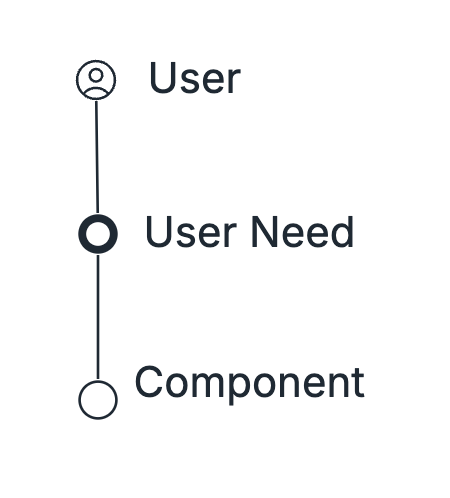
This visualization can be read from top to bottom as: User expresses User Need that is fulfilled by the Component.
For example, consider a Value Chain for a system that describes a tea shop that sells tea to the public:
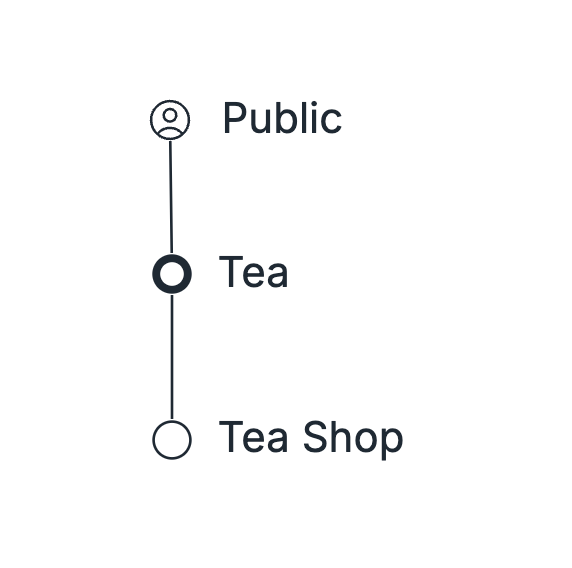
This Value Chain can be read from top to bottom as: Public expresses the need for Tea that is fulfilled by the Tea Shop.
This initial Value Chain will eventually become more detailed based on our analysis (how to do this will be explained later on). For example, the original Tea Shop Component could become:
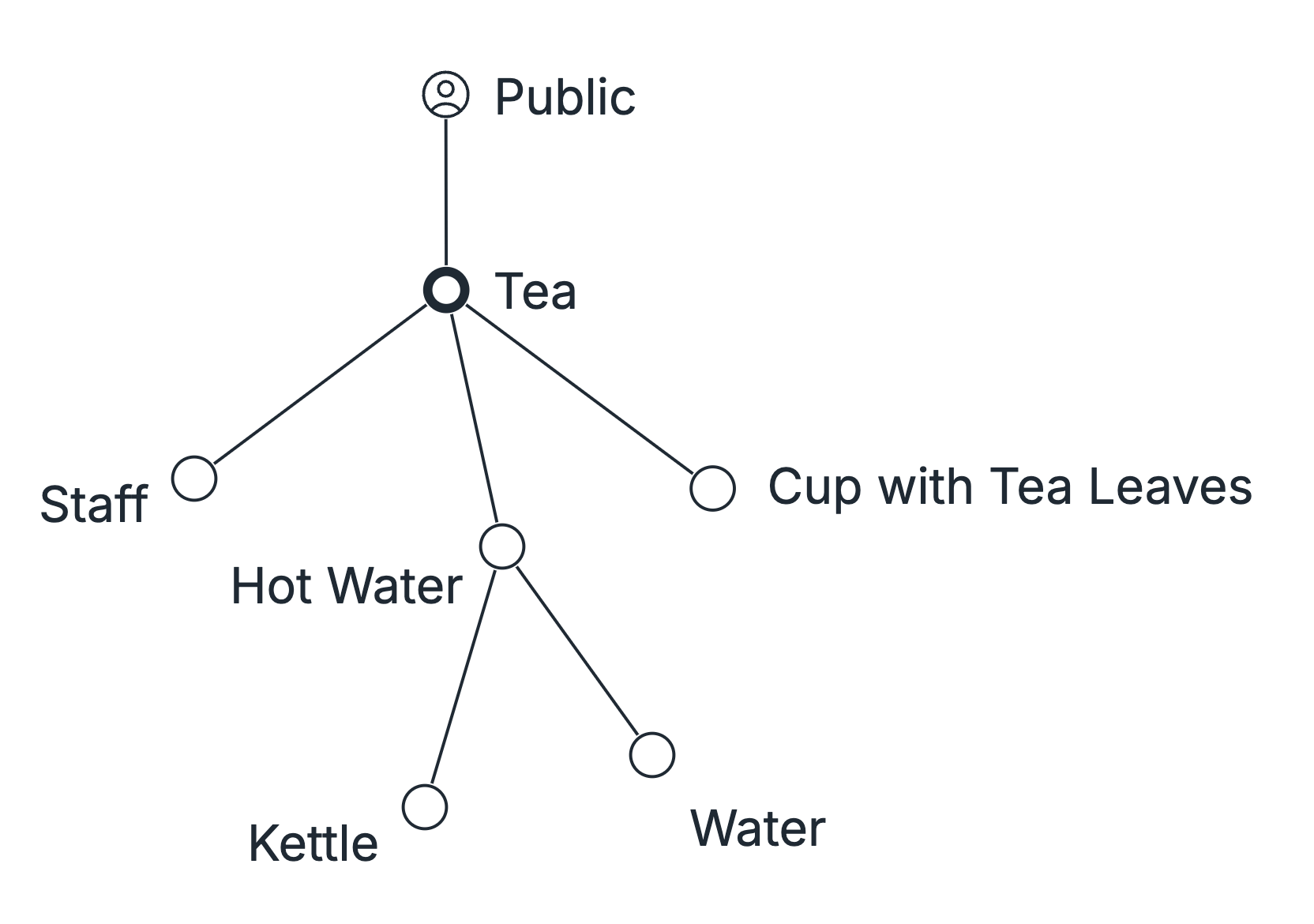
This Value Chain can be read from top to bottom as: Public expresses the need for Tea. The need for Tea is fullfilled by the Staff AND Hot Water AND Cup with Tea Leaves. Hot Water depends on Kettle AND Water.
No matter how large and detailed the Value Chain becomes, it can always be turned into a series of statements where a User expresses User Needs that are fulfilled by Components that depend on other Components.
This covers the basics of a Value Chain. Next, let's go over the other concept we'll need, Constraint.
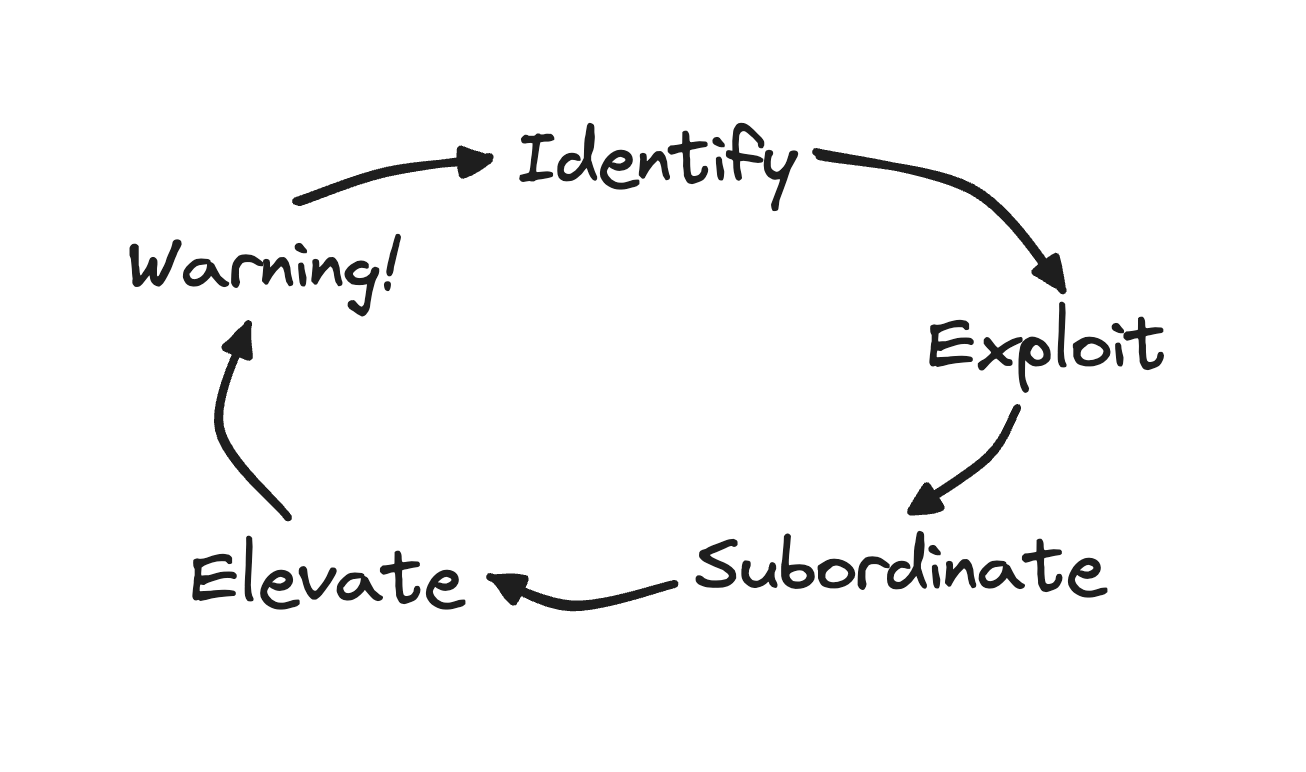
Go back
About the steps
Learn the Five Focusing Steps to improve your system with practical, step-by-step guidance. This lesson provides high-level overview of key concepts for continuous improvement.
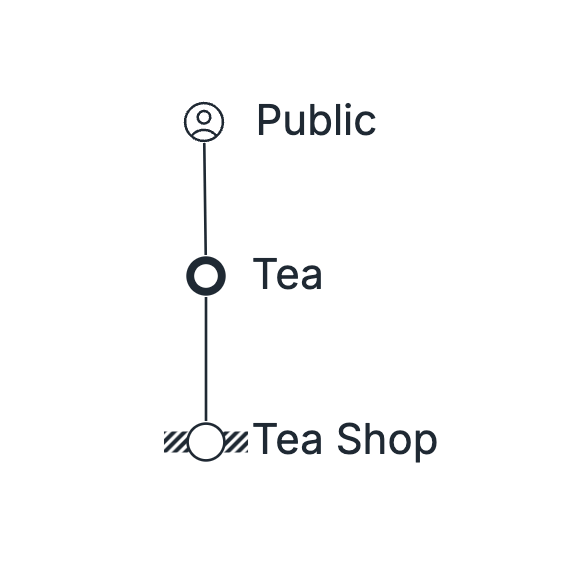
Up next
Constraint
Understand the concept of Constraint in system strategy, focusing on the most limiting factor that restricts the flow of value. This lesson explores how to identify and address the single Constraint within a system, using a tea shop example.
